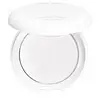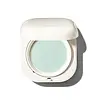What's inside
What's inside
 Key Ingredients
Key Ingredients

 Benefits
Benefits

 Concerns
Concerns

 Ingredients Side-by-side
Ingredients Side-by-side

Silica
AbrasiveCaprylic/Capric Triglyceride
MaskingDimethicone/Vinyl Dimethicone Crosspolymer
Skin ConditioningMethicone
EmollientWater
Skin ConditioningChamomilla Recutita Flower Water
MaskingEthylhexylglycerin
Skin ConditioningGlyceryl Caprylate
EmollientButylene Glycol
HumectantMentha Arvensis Leaf Extract
MaskingDipotassium Glycyrrhizate
Humectant1,2-Hexanediol
Skin ConditioningHydrolyzed Hyaluronic Acid
HumectantHydrolyzed Corn Starch
HumectantPinus Densiflora Leaf Extract
AntimicrobialTocopherol
AntioxidantDisodium EDTA
Silica, Caprylic/Capric Triglyceride, Dimethicone/Vinyl Dimethicone Crosspolymer, Methicone, Water, Chamomilla Recutita Flower Water, Ethylhexylglycerin, Glyceryl Caprylate, Butylene Glycol, Mentha Arvensis Leaf Extract, Dipotassium Glycyrrhizate, 1,2-Hexanediol, Hydrolyzed Hyaluronic Acid, Hydrolyzed Corn Starch, Pinus Densiflora Leaf Extract, Tocopherol, Disodium EDTA
 Reviews
Reviews

Ingredients Explained
These ingredients are found in both products.
Ingredients higher up in an ingredient list are typically present in a larger amount.
1,2-Hexanediol is a synthetic liquid and another multi-functional powerhouse.
It is a:
- Humectant, drawing moisture into the skin
- Emollient, helping to soften skin
- Solvent, dispersing and stabilizing formulas
- Preservative booster, enhancing the antimicrobial activity of other preservatives
Glyceryl Caprylate comes from glycerin and caprylic acid, a fatty acid from coconut. It has emollient and emulsifier properties.
As an emollient, it helps hydrate your skin. Emollients work by creating a barrier on your skin to trap moisture in, helping to keep your skin soft and smooth.
On the other hand, emulsifiers prevent ingredients (such as oil and water) from separating.
Learn more about Glyceryl CaprylateSilica, also known as silicon dioxide, is a naturally occurring mineral. It is used as a fine, spherical, and porous powder in cosmetics.
Though it has exfoliant properties, the function of silica varies depending on the product.
The unique structure of silica enhances the spreadability and adds smoothness, making it a great texture enhancer.
It is also used as an active carrier, emulsifier, and mattifier due to its ability to absorb excess oil.
In some products, tiny microneedles called spicules are made from silica or hydrolyzed sponge. When you rub them in, they lightly polish away dead skin layers and enhance the penetration of active ingredients.
Learn more about Silica